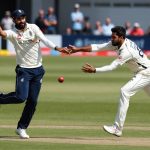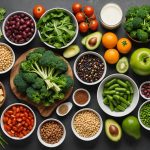Unlocking Performance: Leveraging Biofeedback for Enhanced Training and Recovery in Athletes
In the pursuit of peak performance, athletes are continually seeking innovative methods to enhance their training and recovery. One of the most promising tools in this quest is biofeedback, a technology that provides real-time feedback on physiological responses, allowing athletes to optimize their mental and physical states. Here, we delve into the world of biofeedback, exploring how it can be a game-changer for athletes looking to elevate their performance.
Understanding Biofeedback
Biofeedback is a technique that involves using equipment to monitor and provide feedback on various physiological parameters such as heart rate, heart rate variability (HRV), brainwave activity, and other bodily functions. This feedback enables individuals to become more aware of their physiological responses and learn to control them through specific techniques.
Have you seen this : Unlocking Optimal Muscle Recovery: The Ultimate Protein Choices for Post-Triathlon Success
How Biofeedback Works
Biofeedback devices, such as the Neuphony EEG headband, use sensors to capture data on the body’s physiological responses. For instance, EEG headbands monitor brainwave activity, while heart rate monitors track HRV parameters. This data is then fed back to the user in real time, allowing them to adjust their mental and physical states accordingly.
### Example of Biofeedback Devices
- **Neuphony EEG Headband**: Monitors brainwave activity to enhance cognitive function, stress management, and focus.
- **Heart Rate Monitors**: Track HRV parameters to optimize cardiovascular performance and stress management.
Cognitive Training and Performance Enhancement
Biofeedback is increasingly being used in cognitive training programs to enhance athletic performance. By engaging in brain-training tasks while receiving feedback on brainwave activity, athletes can improve attention, memory, and cognitive function.
Also read : Unleashing Athletic Potential: The Vital Role of Vitamin D in Enhancing Performance
Cognitive Benefits
- Improved Attention Control: Biofeedback helps athletes maintain focus and concentration under pressure.
- Enhanced Working Memory: Training programs using biofeedback can improve working memory, allowing athletes to process information more efficiently.
- Better Executive Function: Biofeedback enhances executive function, which includes planning, decision-making, and problem-solving skills.
### Effectiveness of Cognitive Training with Biofeedback
- **Up to 75% improvement in cognitive performance** with the Neuphony EEG headband.
- **Enhanced focus and reduced performance anxiety** in athletes using biofeedback devices.
Stress Reduction and Relaxation
Stress management is a critical aspect of athletic performance. Biofeedback devices help athletes manage stress and promote relaxation by providing feedback on brainwave patterns and HRV.
Techniques for Stress Reduction
- Relaxation Techniques: Biofeedback-guided relaxation techniques help athletes learn to manage stress effectively.
- HRV Training: Training programs focused on HRV parameters can improve stress resilience and overall well-being.
- Breathing Exercises: Breathing training, as part of biofeedback programs like Inner Armor, maximizes the energy of every cell and increases HRV.
### Example of Stress Reduction Programs
- **Neuphony EEG Headband**: Reduces stress levels by up to 70% and improves overall psychological well-being.
- **Inner Armor**: Combines vision, breathing, and focus training to build dynamic resilience and reduce stress.
Peak Performance Training in Sports
Biofeedback is integral to peak performance training programs in sports, helping athletes optimize their cognitive function, stress management, and focus during competition.
Real-Time Feedback
- Monitoring Brainwave Activity: Devices like the Neuphony EEG headband monitor brainwave activity in real time, allowing athletes to adjust their mental states.
- HRV Parameters: Real-time feedback on HRV parameters helps athletes optimize their cardiovascular performance and manage stress.
### Effectiveness in Sports Performance
- **60% to 75% improvement in athletic performance** with the use of biofeedback devices like the Neuphony EEG headband.
- **Enhanced focus and reduced performance anxiety** in athletes using biofeedback devices.
Cognitive Rehabilitation and Neurofeedback-Assisted Recovery
Biofeedback is also used in cognitive rehabilitation programs for individuals recovering from traumatic brain injuries (TBI) and other neurological conditions.
Neuroplasticity and Functional Recovery
- Promoting Neuroplasticity: Biofeedback devices help guide personalized rehabilitation strategies to optimize recovery outcomes.
- Functional Recovery: By providing real-time feedback on brainwave activity, biofeedback devices facilitate neuroplasticity and adaptive learning, aiding in the recovery of motor function, cognitive skills, and overall quality of life.
### Effectiveness in Cognitive Rehabilitation
- **60% to 75% improvement in cognitive function and daily living skills** for individuals recovering from TBI using the Neuphony EEG headband.
- **65% to 75% improvement in functional outcomes** for individuals with neurological conditions using neurofeedback-assisted rehabilitation.
Practical Insights and Actionable Advice
For athletes looking to integrate biofeedback into their training and recovery routines, here are some practical insights and actionable advice:
Choosing the Right Device
- Consider Your Goals: Whether you are looking to enhance cognitive function, manage stress, or improve athletic performance, choose a device that aligns with your goals.
- Ease of Use: Opt for devices that are user-friendly and provide clear, real-time feedback.
Incorporating Biofeedback into Your Routine
- Start Small: Begin with short sessions and gradually increase the duration as you become more comfortable with the technology.
- Consistency: Make biofeedback a regular part of your training routine to see consistent improvements.
Combining Biofeedback with Other Training Methods
- Holistic Approach: Combine biofeedback with other training methods such as physical fitness routines, mental toughness training, and goal setting to achieve a holistic approach to performance enhancement.
### Example of a Holistic Training Program
| Training Component | Description |
|
|-----------------------------------------------------------------------------|
| **Physical Fitness** | Regular exercise and proper nutrition to enhance stamina and resilience. |
| **Mental Toughness** | Strategies for overcoming self-doubt and making critical decisions under pressure. |
| **Biofeedback Training** | Using devices like the Neuphony EEG headband to monitor brainwave activity and HRV parameters. |
| **Goal Setting and Planning** | Setting realistic, measurable goals and creating detailed plans to achieve them. |
Quotes and Anecdotes
- “The real key to unlocking an athlete’s full potential lies in understanding and enhancing the brain’s role in athletic performance.” – NeuroTracker Blog
- “By training the upstream biological processes to be ready to respond to the current moment, we build what we call Dynamic Resilience.” – Inner Armor
Biofeedback is a powerful tool that can significantly enhance training and recovery in athletes. By providing real-time feedback on physiological responses, biofeedback devices help athletes optimize their mental and physical states, leading to improved performance and better overall well-being. Whether you are an athlete looking to gain a competitive edge or an individual seeking to manage stress and improve cognitive function, biofeedback is definitely worth considering.
In the words of John Williams from “The Champion’s Code,” “Champions are made through hard work, perseverance, and a relentless pursuit of excellence.” By integrating biofeedback into your training routine, you are taking a significant step towards unlocking your full potential and achieving peak performance.






